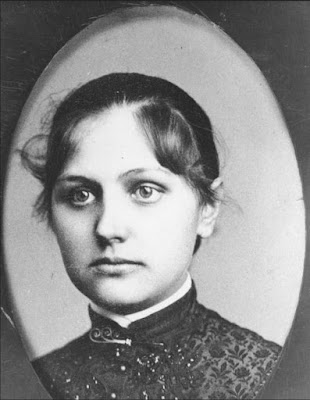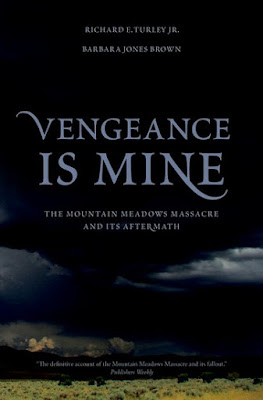Observations by Doug Gibson
Last fall I read two new biographies of 19th century/early 20th century LDS Church leaders Joseph F. Smith, who served as the church's president/prophet, and George Q. Cannon, who reached the first presidency of the church and would likely have been prophet if not for an untimely death in 1901.
I wasn't planning to review either, but they were both so good that I decided to spill some ink. They represent honest biographies that address a subject's totality; the strengths that made the exceptional, committed leader, and the weaknesses, personal and administrative, that sometimes tempered goals and showed human fraility in trying to deal with familial and business pressures.
"Like a Fiery Meteor: The Life of Joseph F. Smith," by Stephen C. Tayson (University of Utah Press, 2023), is an exceptional study of the life of the LDS Church's sixth president. "Like a Fiery Meteor" is an apt description. Joseph F. Smith was an impressive man and leader. He was pragmatic, understanding that the loose adherence to the first and second manifestos disallowing polygamy had to be strengthened, even to church disfellowship or excommunication for prominent members. Smith also ushered in the beginnings of church standardization in doctrine and lessons, initiated efforts toward the church becoming an expanded business force. He also weathered harsh testimony and brutal media attacks during Reed Smoot's successful effort to be U.S. senator. And just before his death, his revelation of the afterlife has become canonized as LDS church scripture.
Joseph F. Smith was not the always kind, mellow grandfather type so often portrayed within LDS culture. Indeed, he was a man who bristled with temper and resentments, a harsh taskmaster who could only spare little time with his many children but was excessively interested in shaping their lives. He was a sentimental man, who agonized over the early deaths of children and grandchildren. Still a young child when his father, Hyrum Smith, was murdered with uncle Joseph Smith, Smith crossed the plains with his mother, Mary Fielding Smith. His entire life Smith believed his mother was treated badly by church leaders and others in Utah. She died in 1852 when he was still a young teen, and his resentments and harsh early life left an inner rage that sometimes provoked violence. Due to his temper, which included assaults, LDS church leaders took a task used often then: get the troubled youth involved in church service.
Smith, as a teenager, was sent on a mission to the Hawaiian Islands. He thrived there, learning the language, and working hard. He became the mission leader. On one occasion, the teenage mission president excommunicated nine converts after a church meeting.
The young Smith had a complex relationship, likely rooted in romance, with a Smith cousin who lived in California. She was hostile to the church but they remained in correspondence for a lifetime. Taysom's accounts of this guarded friendship and often-hostile correspondence between the pair is very interesting. She was a sounding board for Smith's bewildered frustration that most of the Nauvoo Smiths had spurned the Utah Mormons.
Smith's first marriage was a disaster. His wife, Levira, who would likely be classified as with clinical depression and other mental afflictions, needed a husband of extreme patience and empathy. Smith was not capable of dealing with this difficult marriage. His church duties had expanded, including a mission to England. Unable to check his anger, Smith on at least one occasion beat Levira. They eventually divorced.
F. Smith later married five wives and fathered 48 children. His personal weaknesses aside, he was a valuable administrator and leader within the church, and soon became an LDS apostle. What Taysom notes well in his biography is that despite being an orthodox Mormon who essentially distrusted the media and culture outside Utah, Smith was talented, confident and formidable enough to confront that world, to go out and talk to religious, cultural and political leaders. Smith's' energy, as well as other church leaders of that era, refute the misconception that LDS leaders in the latter half of the 18th century avoided the public eye.
Smith abhorred any sexual immorality, and defined it like a Puritan. He was the driving force for Apostle Albert Carrington to be excommunicated for adultery while mission leader in England. He was a fierce opponent of masturbation, which must have caused a lot of teens and men heavy guilt after one of his sermons.
If he were alive today, he'd be thrilled at the scores of temples in the world. Temple work was a particular priority of his. Smith was a magnet of hatred for anti-Mormons in the first part of the 20th century. Ending his life as a successful church president can be considered a triumph for him.
---
The second biography is "George Q. Cannon: Politician, Publisher, Apostle of Polygamy," by Kenneth L. Cannon II (Signature Books, 2023). It is one of Signature's recent "short" biographies (fewer than 300 pages). It is a superb book that provides a lot of information on this accomplished man's life. Like Joseph F. Smith, George Q. Cannon was a leader who both embodied the orthodoxy of early Mormonism, yet fully embraced the challenges of moving forward through changes in the latter 19th century. Cannon was a skilled politician, a superb journalist, and an experienced businessman. In the latter part of the 19th century, Cannon was handling many of the duties that the current presidents could not handle, due to their advanced age.
Cannon experienced tragedy early in his life. A native of Liverpool, England, his mother died on the ship taking her and George to Nauvoo. His father later died in Nauvoo. Early church leaders were impressed with the youth, who emigrated to Utah in 1847. Before he was 20 he was sent on missions to the gold regions of California and the Hawaiian Islands. Like Joseph F. Smith, he was a hard-working efficient missionary in Hawaii who mastered the language and amazingly, translated the Book of Mormon into the native language.
Cannon proved to be a natural writer, reporter, editor and publisher. He presided over the British mission and edited The Millennial Star. He also edited The Juvenile Instructor and other pubs. He oversaw the early Deseret News. He was also an accomplished diplomat and politician, serving as a territorial delegate in Washington D.C., and lobbying cultural and political powers to soften their stances against the young Mormon church, particularly on polygamy.
He would lose on his efforts to soften blows against polygamy. He would lose his territorial seat, and eventually go into hiding as a fugitive. He would serve a short time in prison as a convicted polygamist. Prior to his incarceration, Cannon II relates an escape attempt after Cannon was located by marshals. Cannon jumped off a moving train and was badly injured.
Cannon was a fervent polygamist. He married six wives and fathered 43 children. His oldest sons occasionally caused him great stress. John Q. Cannon, a journalist and general authority, committed adultery with his wife's sister. John Q. Cannon impregnated Louie Wells. This resulted in his excommunication, divorce, and a hasty marriage to Louie. He also faced a criminal charge. Tragically, Louie, largely ignored by John Q., died soon after birthing a stillborn child. Cannon's' eldest son was later rebaptized and remarried to his former wife.
Another son, Frank, while possessing political and journalism talents, was an alcoholic and a rake. Frank, who served in political positions, was at times shielded by his father's power. Once George Q. Cannon died, Frank saw his influence diminish considerably. He later became a fierce antagonist against the LDS Church, and later President Joseph F. Smith, writing a book and lecturing against the LDS Church across the nation.
Cannon's heavy influence with church presidents Woodruff and Snow led to some criticism, although it may have been just jealousy. He was impulsive on business dealings for the church and himself. Not all succeeded, and he took criticism for some dealings. In his defense, it was a time of great anxiety. The LDS Church was in peril of financial obliteration due to legislation punishing the church for polygamy.
Statehood was a goal for Cannon, and one way he helped was taking the LDS Church's political party, and moving members into conventional party politics, rather than the clannish LDS church party.
In 1900, the elder statesman Cannon returned to Hawaii, 50 years after his mission. As Cannon II notes, he was greeted warmly, with love and respect. But his health was failing, and he died soon afterward in 1901.
---
A postscript: In his introduction to "Like a Fiery Meteor ...," author Tayson says there are two previous biographies of Joseph F. Smith. Both, he notes, are hagiographies, "written for a casual LDS audience seeking faith-promoting portraits of LDS leaders." Taysom contrasts those two biographies with a biographical essay titled, "Before the Beard: Trials of the Young Joseph Smith." Taysom says that essay falls under the spectrum "described by biographer Oleg V. Khlevniuk as 'archival exposes.'" As Taysom notes, this is the practice of using newly released, less favorable historical documents "in such a way that only the sensationally negative aspects of the figure are revealed." As Tayson writes, "Both hagiographies and archival exposes suffer from the same malady: they tend to be one-dimensional and deeply invested in the 'morality' rather than than 'humanity' of their subjects."
Fortunately, the above biographies of Smith and Cannon avoid the tags of hagiography or archival expose. Readers are awarded with insights into their lives, their times, the families, their careers, and their humanity.











